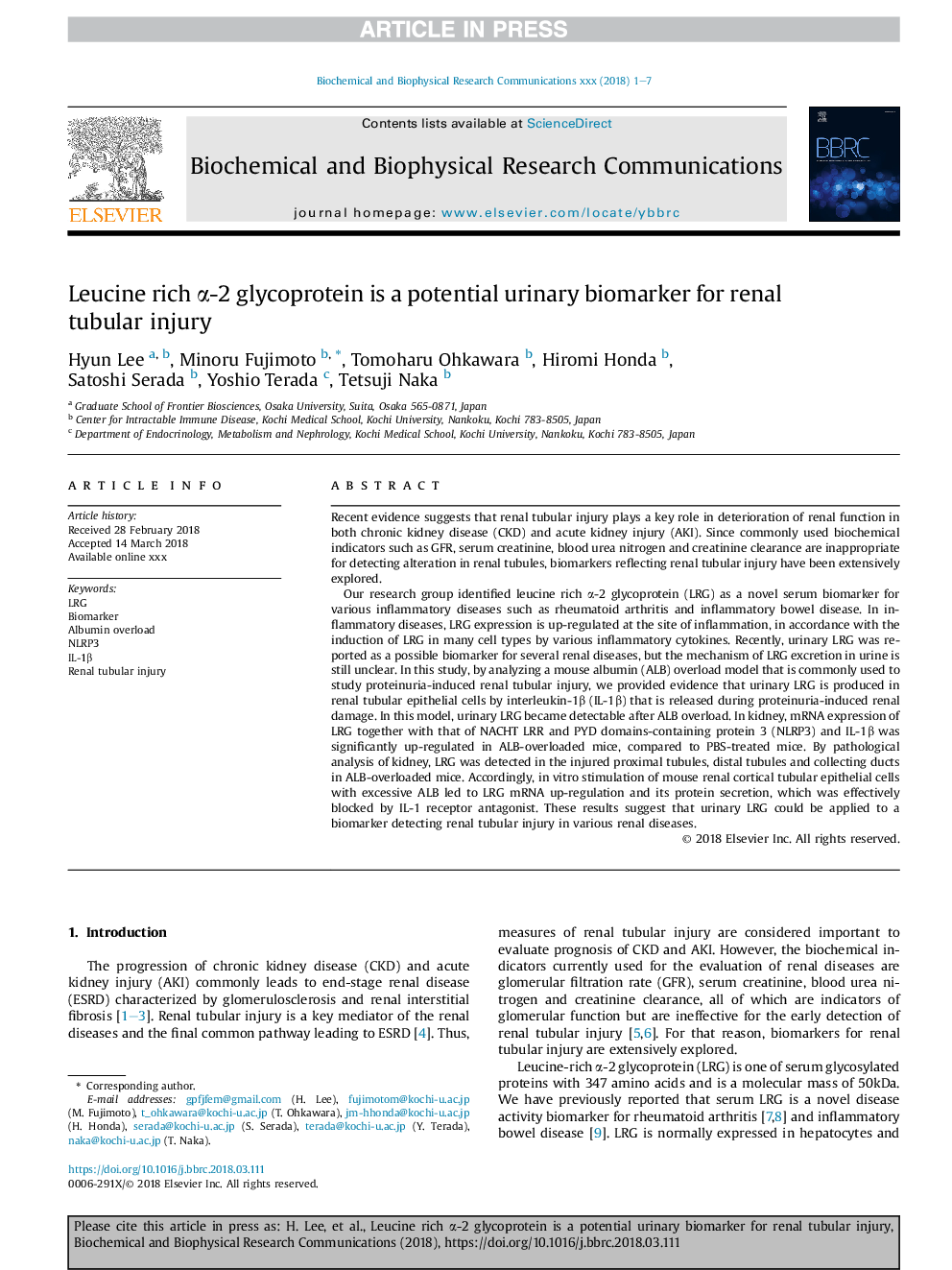| Article ID | Journal | Published Year | Pages | File Type |
|---|---|---|---|---|
| 8293392 | Biochemical and Biophysical Research Communications | 2018 | 7 Pages |
Abstract
Our research group identified leucine rich α-2 glycoprotein (LRG) as a novel serum biomarker for various inflammatory diseases such as rheumatoid arthritis and inflammatory bowel disease. In inflammatory diseases, LRG expression is up-regulated at the site of inflammation, in accordance with the induction of LRG in many cell types by various inflammatory cytokines. Recently, urinary LRG was reported as a possible biomarker for several renal diseases, but the mechanism of LRG excretion in urine is still unclear. In this study, by analyzing a mouse albumin (ALB) overload model that is commonly used to study proteinuria-induced renal tubular injury, we provided evidence that urinary LRG is produced in renal tubular epithelial cells by interleukin-1β (IL-1β) that is released during proteinuria-induced renal damage. In this model, urinary LRG became detectable after ALB overload. In kidney, mRNA expression of LRG together with that of NACHT LRR and PYD domains-containing protein 3 (NLRP3) and IL-1β was significantly up-regulated in ALB-overloaded mice, compared to PBS-treated mice. By pathological analysis of kidney, LRG was detected in the injured proximal tubules, distal tubules and collecting ducts in ALB-overloaded mice. Accordingly, in vitro stimulation of mouse renal cortical tubular epithelial cells with excessive ALB led to LRG mRNA up-regulation and its protein secretion, which was effectively blocked by IL-1 receptor antagonist. These results suggest that urinary LRG could be applied to a biomarker detecting renal tubular injury in various renal diseases.
Related Topics
Life Sciences
Biochemistry, Genetics and Molecular Biology
Biochemistry
Authors
Hyun Lee, Minoru Fujimoto, Tomoharu Ohkawara, Hiromi Honda, Satoshi Serada, Yoshio Terada, Tetsuji Naka,
